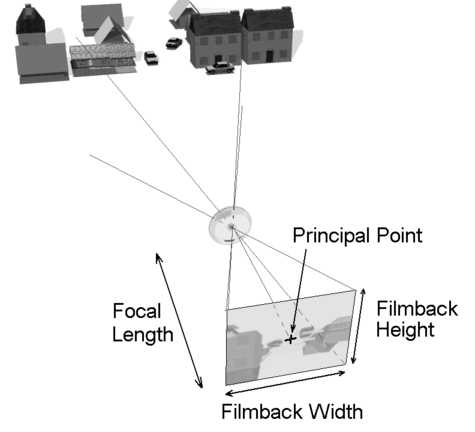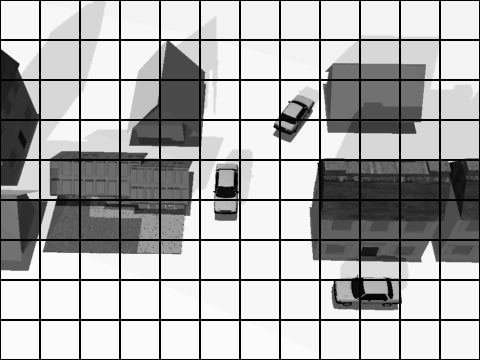Cameras represent the different devices used to capture the images. By default, when you load a sequence or helper image, MatchMover creates a camera and assigns it to all images. In MatchMover, a camera is characterized by its internal parameters such as Principal Point, Focal Length, Pixel Aspect Ratio, and Distortion. If you already have information about the camera, for example, you know that it is a 24 ×36 mm film back camera with a 35 mm lens, you can input this information into MatchMover® Pro before launching the camera tracker.

The focal length is the distance between the film and the optical center of the lens when the lens is focused on infinity. The principal point represents the projection of the optical center onto the film back, perpendicular to the film back plane. The film back value represents the size of your film and is proportional to the pixel aspect ratio. See Setting up cameras.
Each camera parameter has a value that you can input into MatchMover, or you can have MatchMover calculate. The camera parameters Focal Length, Principal Point, Pixel Aspect Ratio, and Distortion can vary or remain constant throughout the sequence. Depending on the information you have about the cameras used to create the sequence, these parameters can either be known or unknown.
Providing extra information to the camera tracker gives more accurate results with a faster calculation time. The pixel aspect ratio defines the aspect ratio of the sequence you render. If the sequence has square pixels, then the pixel aspect ratio is 1.

It is common, especially with video footage, to work with non-square pixels, such as in the image below. In these cases, the pixel ratio is different from 1.

You can define the pixel aspect ratio for your sequence. As the pixel aspect ratio is dependent on the film back value, and vice versa, changing the pixel aspect ratio also changes the film back value.
Mathematical models of a perfect camera imply that the image of a straight line is always a straight line. However, real lenses are not always perfect and may introduce distortion into your footage. The effect of distortion is that straight lines become curved as shown in the following image.

You can input the radial distortion of your cameras if you know it, or will compute it if you don’t.